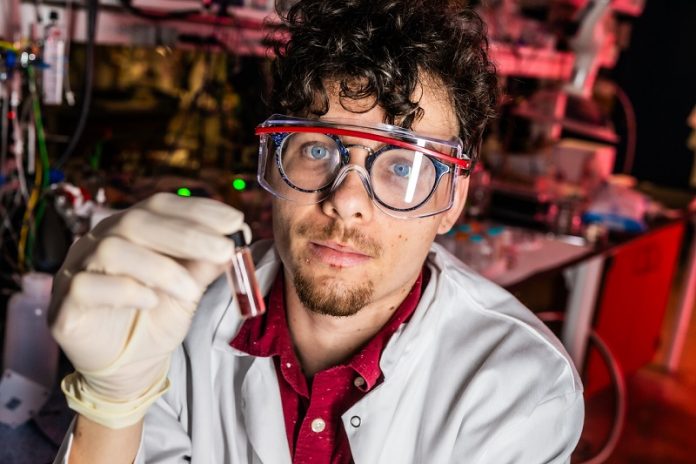
Solar power is rapidly advancing as the fastest-growing energy technology and one of the cheapest and most effective ways to reduce greenhouse gas emissions.
A recent study from Rice University, highlighted on the cover of Science, reveals a groundbreaking method to significantly enhance the performance and stability of perovskite solar cells, making them almost ready for market use.
The study focuses on a type of crystal called formamidinium lead iodide (FAPbI3), which is currently used to make the most efficient perovskite solar cells.
Researchers have developed a way to synthesize FAPbI3 into ultra-stable, high-quality films that are essential for solar cells.
Impressively, the efficiency of these FAPbI3 solar cells decreased by less than 3% after operating for over 1,000 hours at a high temperature of 85 degrees Celsius (185 degrees Fahrenheit).
Aditya Mohite, an engineer at Rice University, has been working on improving the durability and performance of perovskite solar cells for several years.
“Right now, we think that this is state of the art in terms of stability,” Mohite said. “Perovskite solar cells have the potential to revolutionize energy production, but achieving long-term stability has been a significant challenge.”
This recent breakthrough marks a crucial step toward making perovskite solar cells ready for commercial use.
The key to this advancement was “seasoning” the FAPbI3 precursor solution with specially designed two-dimensional (2D) perovskites.
These 2D perovskites act as templates, guiding the growth of the bulk 3D perovskite and providing additional compression and stability to the crystal structure.
Isaac Metcalf, a graduate student in materials science and nanoengineering at Rice University, explains the challenges: “Perovskite crystals can break down in two ways: chemically, which destroys the molecules that make up the crystal, and structurally, which reorders the molecules to form a different crystal. FAPbI3 is on the structurally unstable end of that spectrum.”
While 2D perovskites are more stable both chemically and structurally compared to FAPbI3, they are not very good at harvesting light, making them unsuitable as primary materials for solar cells.
However, the researchers hypothesized that using 2D perovskites as templates for growing FAPbI3 films might transfer their stability to the FAPbI3.
To test this idea, the team developed four types of 2D perovskites—two with a surface structure almost identical to FAPbI3 and two that were less well-matched. They then used these 2D perovskites to create different FAPbI3 film formulations.
“The addition of well-matched 2D crystals made it easier for FAPbI3 crystals to form, while poorly matched 2D crystals actually made it harder to form, validating our hypothesis,” Metcalf said.
The results were impressive. FAPbI3 films templated with well-matched 2D crystals were of higher quality, showing less internal disorder and a stronger response to light, which translated to higher efficiency.
Additionally, these 2D templates improved the durability of the solar cells. While solar cells without any 2D crystals degraded significantly after two days of generating electricity from sunlight, those with 2D templates showed no degradation even after 20 days.
By adding an encapsulation layer to the 2D-templated solar cells, the stability was further enhanced to timescales approaching commercial relevance.
In summary, this new technique developed by Rice University researchers represents a significant step forward in making perovskite solar cells more stable and efficient.
With continued advancements, these solar cells could soon become a viable and competitive option in the renewable energy market, helping to further reduce greenhouse gas emissions and promote sustainable energy solutions.
Source: Rice University.



